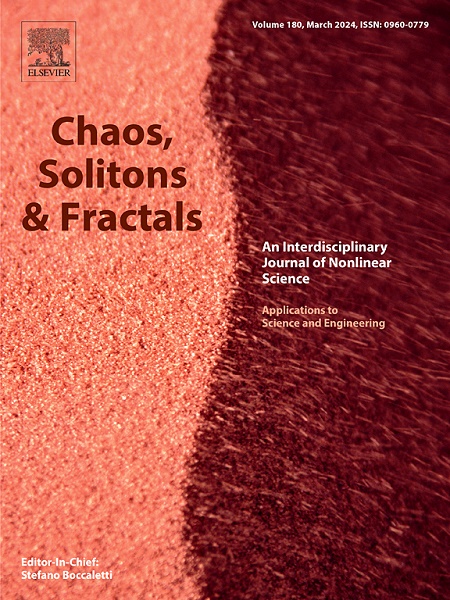M-shape, lump, homoclinic breather and other soliton interaction of the Landau-Ginzburg-Higgs model in nonlinear fiber optics
IF 5.3
1区 数学
Q1 MATHEMATICS, INTERDISCIPLINARY APPLICATIONS
引用次数: 0
Abstract
This study investigates the intricate dynamics of different types of solitons and their interactions within the framework of the Landau-Ginzburg-Higgs model as applied to nonlinear fiber optics. Employing the Hirota bilinear transformation technique, we derive a range of analytical soliton solutions, and demonstrating their rich and diverse behaviors. The proposed methodology provides a more comprehensive framework for analyzing transport processes by expanding these equations. M-shaped rational wave solutions with one kink, M-shaped rational waves with two kinks having bright and dark effects, periodic cross-kink with bright and dark waves, lump mixed-type waves, homoclinic breathers, and breather waves are among the various types of solitons. These many waveforms make it clear, soliton movement within optical fiber is extremely essential. They also offer valuable information that could influence soliton-based signal processing, optical communication systems, drug research, and other scientific fields. This extension of methodology aids in understanding the intricacy of soliton transport and identifying the intricate mechanisms. Additionally, by selecting various constant values, we create 3D and related contour plots to be aware of the physical interpretations of these solutions. Therefore, we get superior physical behaviors from these solutions.
非线性光纤中兰道-金兹堡-希格斯模型的 M 形、块状、同脉呼吸和其他孤子相互作用
本文章由计算机程序翻译,如有差异,请以英文原文为准。
求助全文
约1分钟内获得全文
求助全文
来源期刊

Chaos Solitons & Fractals
物理-数学跨学科应用
CiteScore
13.20
自引率
10.30%
发文量
1087
审稿时长
9 months
期刊介绍:
Chaos, Solitons & Fractals strives to establish itself as a premier journal in the interdisciplinary realm of Nonlinear Science, Non-equilibrium, and Complex Phenomena. It welcomes submissions covering a broad spectrum of topics within this field, including dynamics, non-equilibrium processes in physics, chemistry, and geophysics, complex matter and networks, mathematical models, computational biology, applications to quantum and mesoscopic phenomena, fluctuations and random processes, self-organization, and social phenomena.
 求助内容:
求助内容: 应助结果提醒方式:
应助结果提醒方式:


